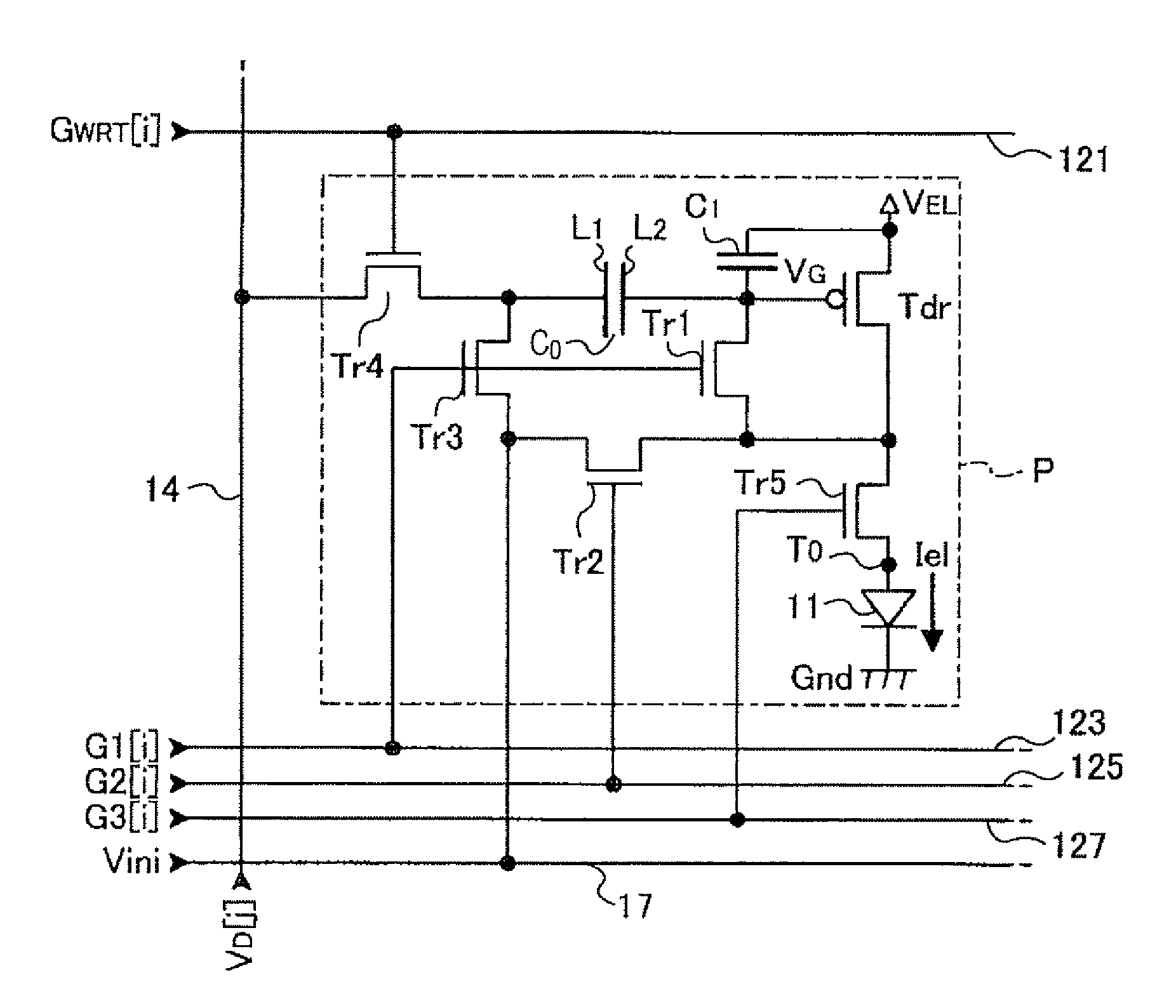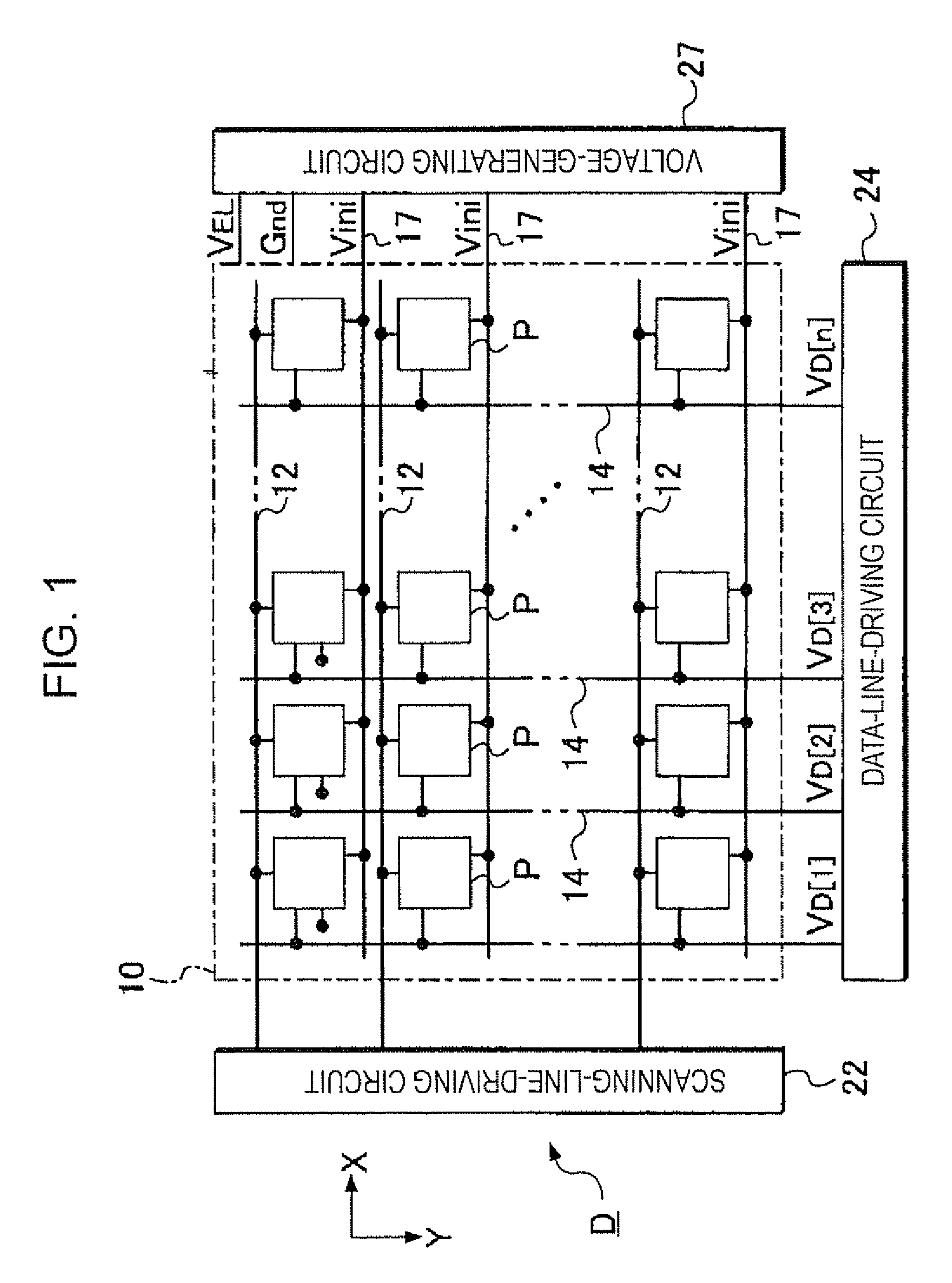Method for driving pixel circuit, electro-optic device, and electronic apparatus
a technology of electrooptic devices and circuits, applied in static indicating devices, instruments, electroluminescent light sources, etc., can solve the problems of reducing an aperture ratio and consuming resistor power, so as to reduce power consumption and reduce the aperture ratio , the effect of reducing the mobility of the driver transistor
- Summary
- Abstract
- Description
- Claims
- Application Information
AI Technical Summary
Benefits of technology
Problems solved by technology
Method used
Image
Examples
first embodiment
A: Configuration of Electro-Optic Device
[0032]FIG. 1 is a block diagram of the configuration of an electro-optic device according to a first embodiment of the invention. An electro-optic device D is one of devices employed in various types of electronic apparatuses as units that display images. The electro-optic device D includes a pixel array unit 10 in which pixel circuits P are disposed in the form of a plane, a scanning-line-driving circuit 22 and a data-line-driving circuit 24 that drive the pixel circuits P, and a voltage-generating circuit 27 that generates voltages used in the electro-optic device D. Referring to FIG. 1, the scanning-line-driving circuit 22, the data-line-driving circuit 24, and the voltage-generating circuit 27 are shown as discrete circuits, but a configuration in which a portion of these circuits or all of these circuits are configured into a single circuit may be employed. Additionally, one scanning-line-driving circuit 22 (or one data-line-driving circu...
second embodiment
[0059]An electro-optic device according to a second embodiment has a configuration similar to that of the electro-optic device according to the first embodiment shown in FIG. 1. However, the timing of the first control signal G1[i] in the electro-optic device according to the second embodiment, which is output from the scanning-line-driving circuit 22, is different from that in the electro-optic device according to the first embodiment.
[0060]FIG. 8 is a timing chart of the electro-optic device according to the second embodiment. In this embodiment, a compensation period PH is provided between the initialization period PINT and the writing period PWRT. In the compensation period PH, the characteristic variation of the second transistor Tr2 is corrected.
[0061]As in the case of the first embodiment, suppose that there are provided two driver transistors Tdr, namely, a driver transistor Tdr having Characteristic A and a driver transistor Tdr having Characteristic B, the threshold Vth of...
PUM
 Login to View More
Login to View More Abstract
Description
Claims
Application Information
 Login to View More
Login to View More - R&D
- Intellectual Property
- Life Sciences
- Materials
- Tech Scout
- Unparalleled Data Quality
- Higher Quality Content
- 60% Fewer Hallucinations
Browse by: Latest US Patents, China's latest patents, Technical Efficacy Thesaurus, Application Domain, Technology Topic, Popular Technical Reports.
© 2025 PatSnap. All rights reserved.Legal|Privacy policy|Modern Slavery Act Transparency Statement|Sitemap|About US| Contact US: help@patsnap.com



